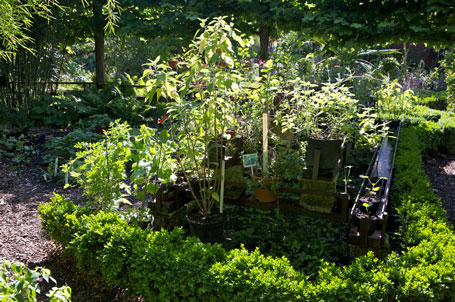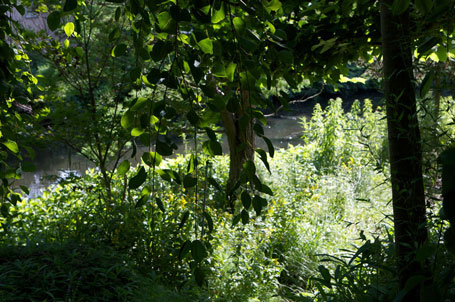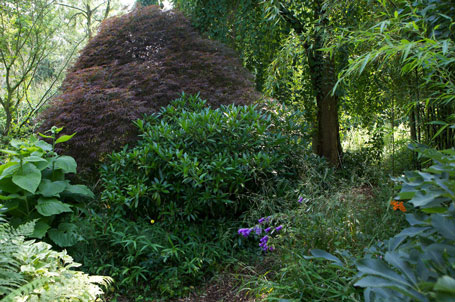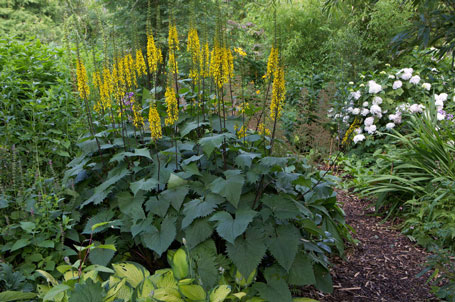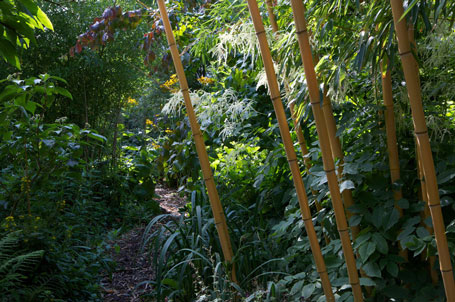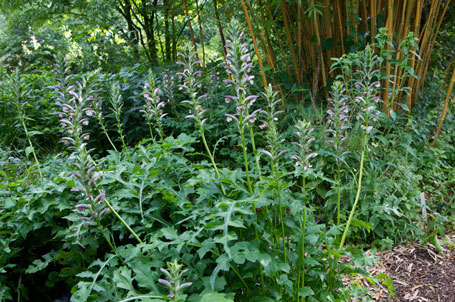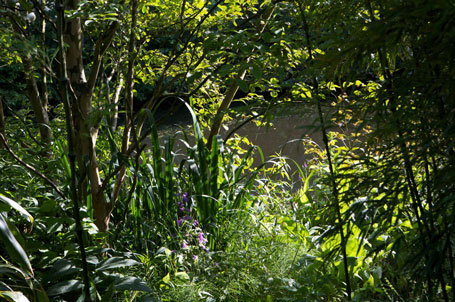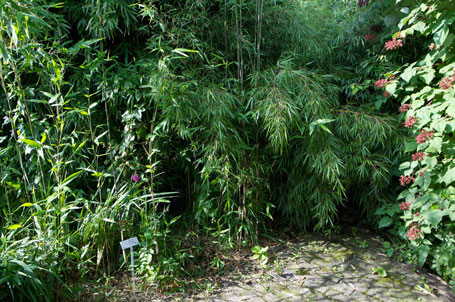Through the project Kingdoms of Life Being Barcoded, all DNA-codes are being collected, identified and visualised as colour based bar codes. In her sound installation and book, Lyske Gais announces all fifteen hundred Dutch plant families, drawing from Heukel’s Flora van Nederland. Her work lays bare the invisible structures and tensions that characterize our never-ending quest to control nature.
Move your mouse over the pictures to hear the sounds on location.
“Red. Green. Blue. Black. Green. ….” From behind the leaves, voices repeatedly whisper, shout and chatter four colours in different sequences. The title refers to Adenine, Thymine, Cytosine and Guanine, the four bases in DNA, and their commonly used mnemonic All Tigers Can Growl.
The colours lay bare a structure invisible to the eye. Since DNA technology has replaced morphology as a means for the classification of species, the categorization of plants has changed. For the botanical garden this resulted in the renaming and replacing of a number of plants and a shifted focus to specimens in experimental biology labs rather than concentrating on the actual plants.
Through a scientific project called Kingdoms of Life Being Barcoded, all DNA codes are being collected, identified and visualised as colour based bar codes. In her sound installation and book, Lyske Gais announces all fifteen hundred Dutch plant families by stating their name and colour code. The list of plants derives from Heukels’ Flora van Nederland, the most important morphology based textbook on Dutch flora.
Lyske Gais’ conceptual approach changes our perception of the botanical garden. The tension between nature and science, between chaos and order, between shape and structure is reflected in the cacophony of rhythmic speech. Her audio installation places a whole new garden on top of the one already there. With a background in architectural design, Lyske Gais often reflects on (invisible) structures in our surroundings, whether biological, sociological or architectural.
